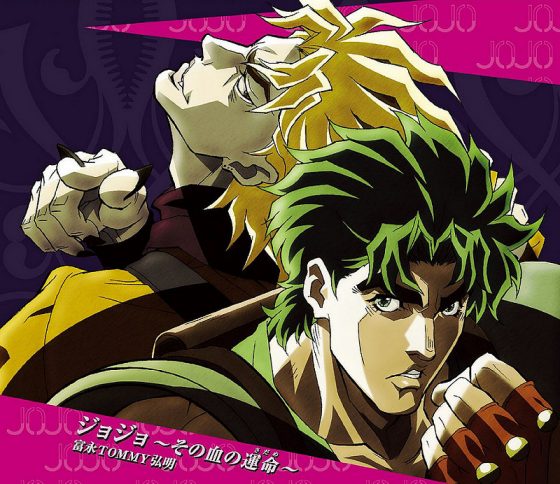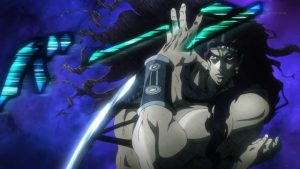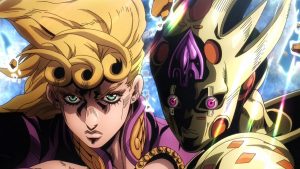
Somehow, Jojo’s Bizarre Adventure has managed to last for over 120 volumes of manga and over 100 episodes of anime by using roughly the same formula for 30 years. You know the drill: Jojo and their friends encounter some strange ability, use their wits and instincts to draw out more information, and strike a decisive blow by using their own powers in creative ways. You know exactly how it’s going to play out, and yet you’re glued to the edge of your seat every single time.
A lot of what keeps Jojo’s Bizarre Adventure fresh though is how every part doesn’t just rotate out the old cast with a new set of characters and throw them in a new setting, but even shifts the entire genre of the story! Let’s take a look at each new change and how it affects each part of Jojo, up to Part 5!
Phantom Blood
It’s hard for a Westerner to consider the state of Shounen manga pre-Jojo, as it was so massively influential on manga and anime at around the same time it was finding its way overseas. The only relics of this era that managed to ingrain themselves in modern anime fandom are Dragon Ball, Captain Tsubasa (Europe only), and possibly Fist of the North Star if you happen to know where the “You Are Already Dead” meme comes from. But even these fall into some of our preconceived notions of what we think of a traditional Shounen Jump battle manga, albeit more simplistic takes on the genre.
But there was a time when battle manga were not Jump’s bread and butter. During the great battle manga revolution, you could still find all sorts of stories in Jump that honestly would not feel out of place next to something like Ghost in the Shell by modern standards. Works like City Hunter, Cat’s Eye, and Keiji were all running next to Dragon Ball and Fist of the North Star Star week-to-week.
This sort of weird transitional period is about the only period in which Phantom Blood makes any sense. We only define Jojo as a shounen battle series because we only have those terms now to describe what Jojo was. In actuality, Phantom Blood was a little bit of everything. It had ridiculous battles, but you could just as easily call it a horror story or a (very loose) period drama.
Battle Tendency
The new name for the new part doesn’t play around. It’s actually the most descriptive name for a story in all of Jojo. If Part 1 was throwing everything to the wall to see what would stick, then Part 2 is all about analyzing what stuck, why it did, and what can be done to enhance its stickiness. “Battle Tendency” sums up perfectly what it’s all about: fighting. That’s not to say it does away with everything else Phantom Blood introduced (like the period piece aspect), but rather we are thrown right into the heart of things with Joseph coming up with clever ways to beat his opponents. In fact, rather than building up to Hamon, Joseph begins with it right away and refines it throughout the course of the story. Even the main conflict is largely driven by Wham’s love of combat and his desire to turn Joseph into a better opponent for him to crush.
Stardust Crusaders
Up until the mid-1800s, Japan had an incredibly isolated view of the world due to their closed border policy. However, even after they opened their borders to the rest of the world, there was still an apathy towards the outside world. It wasn’t until the 1980s that Japan became known as the world power they are today. No longer could the nation pretend like they weren’t a part of the world when their economy thrived on international trade.
This new global perspective is precisely what distinguishes Stardust Crusaders from the prior 2 parts. Battle Tendency had a bit of world traveling, but the focus was still directly on the battles and how they played out. Stardust Crusaders is just as much about the journey as it is about the ridiculous psychic ghost fights, with our main crew globe-hopping from one exotic location to the next with a little culture lesson each time.
Diamond is Unbreakable
Diamond is Unbreakable is the first time that Jojo starts de-escalating the story and completely changes what it was originally about. Somehow, it does the impossible by creating a shounen battle/slice-of-life hybrid series, where it really analyzes what can be done with the formula. Battles are no longer about the conflict between good and evil and the fate of the planet but random everyday situations that people could potentially relate to while still maintaining its fantasy elements. How’s that one restaurant making such good food out in the middle of nowhere? How do I deal with that girl who seems way too into me? How do I deal with this manga author who’s holding me hostage so he can open my face to get inspiration for his current work?
Okay, maybe not that last one.
Vento Aureo/Golden Wind
While Araki probably wanted Vento Aureo to be his take on gritty crime dramas… let’s be real. What really makes it stand out is how it explores horror in ways that past Jojo stories only touched upon. Here we see some of the most grotesque and violent imagery in all of Jojo (even after it moves to seinen) to elicit a sense of hopelessness, with many of our heroes getting impaled, shot in the head, or even getting an entire fist shoved through them, recontextualizing shounen imagery as body horror when in something like Dragon Ball it would just be something awesome that happened.
Final Thoughts
Jojo’s Bizarre Adventure continues to evolve its genre in the manga today, but this at least covers up to where the anime has left off. If not for Jojo, we may have not even have the concept of “shounen battle” that we do today, because until Jojo, we didn’t even need that!
Recommended Post
The Writing of JoJo's Bizarre Adventure
Recommended Post
6 Anime Like The God of High School [Recommendations]
Recommended Post




